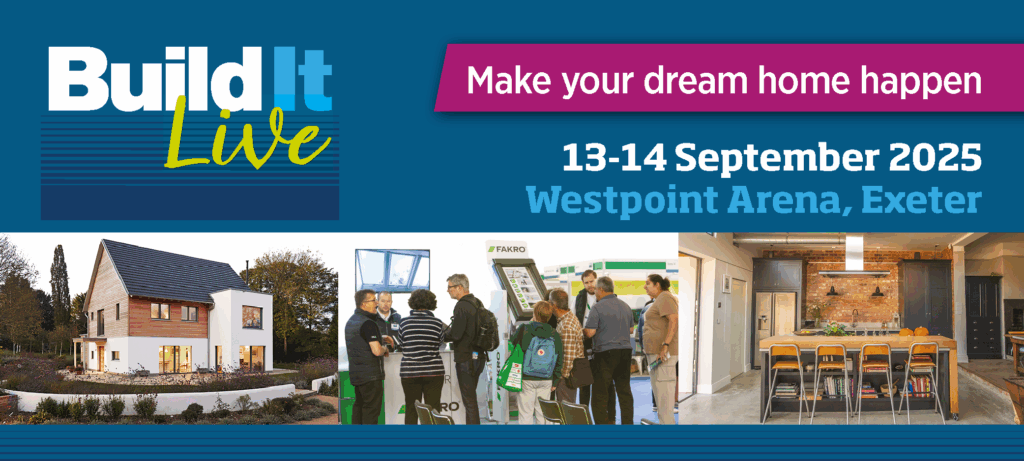
Let us help at Build It Live
Claim your two free tickets here!
Let us help at Build It Live
Claim your two free tickets here!Our Eastrip Lane client is an experienced self-builder and has a healthy knowledge of the kind of sustainable techniques we’ve been honing over our 20-odd years in the industry. This is a great scenario for us – we love our clients to be engaged and interested and are always happy to exchange ideas.
The project site was on a significant slope. While this is something we’ve grown quite used to, it does tend to mean more concrete or cement-based building materials than we would ideally want.
Notwithstanding this fact we were mindful of embodied C02 and worked hard to keep that as low as possible.
The terms passive and near passive are often bandied about imprecisely, but when we employ these terms the heat demand, over-heating risk and primary energy consumption have been modelled using the PHPP package. The envelope design has been reviewed in relation to junctions, cold bridging and continuity of airtightness and insulation, and the levels required to meet Passivhaus standards have been broadly achieved.
The client has been carefully monitoring this building since it was completed and the outcome is, in fact, better than Passivhaus performance.
This is a happy testament to our rigorous working methods across all projects. The PV array originally planned was omitted as it was considered a low priority; had it been installed, we would be looking at Passivhaus Plus performance.
Uvalues W/m2.K
• Walls 0.11
• Roof 0.12
• Floor 0.06
• Openings 0.69
Airtightness
• 0.33 m3/h/m3
Heat demand (as modelled at design stage)
• 15.6 kwh/m2/yr